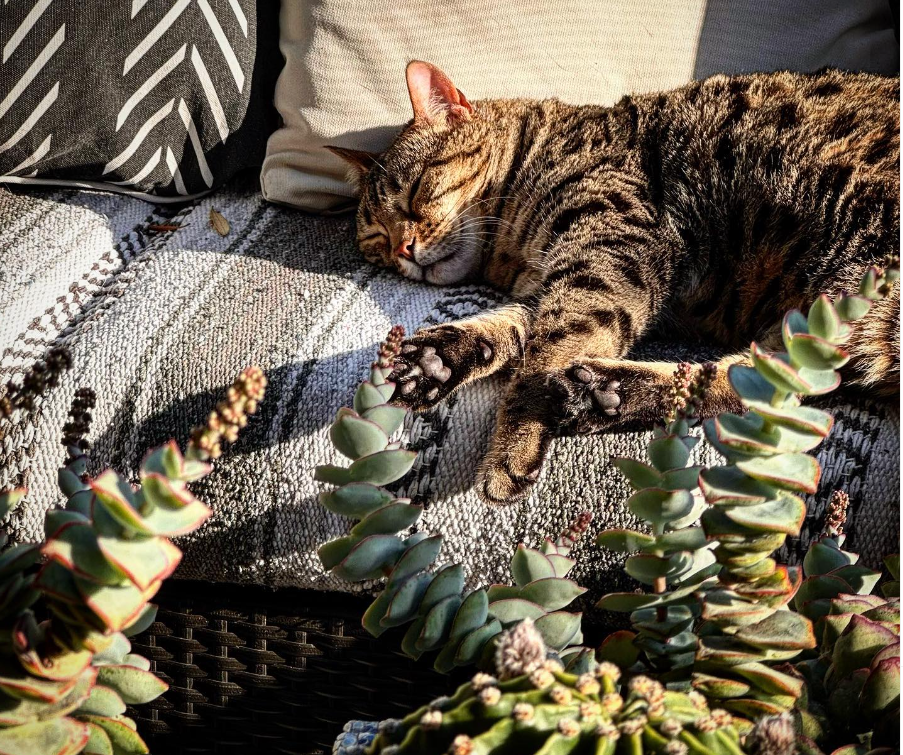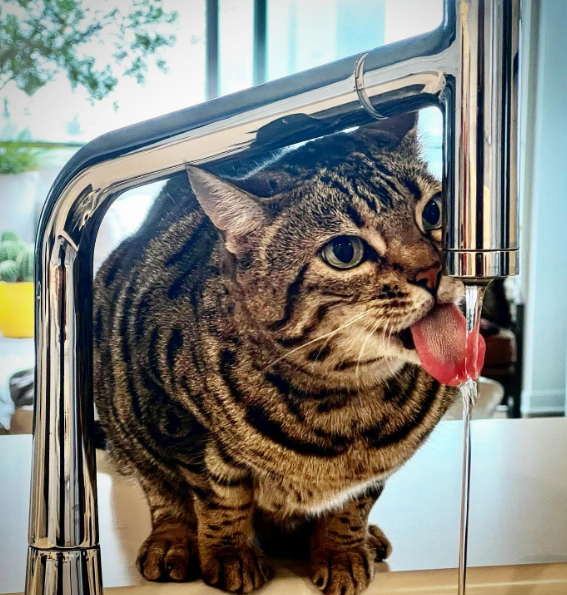Bengal cats are known for their striking appearance and playful personalities. However, one issue that many Bengal cat owners face is their tendency to pee outside of the litter box.
I understand how frustrating and concerning this behavior can be especially when you don’t know if this is a serious medical issue.
In this article, I will explore the reasons why Bengal cats pee everywhere and provide tips on how to address this issue.

Common Reasons for Your Bengal Kitty Peeing Outside Its Litterbox
While peeing outside of the litter box can be a sign of a medical issue, such as a urinary tract infection, it can also be a behavioral problem.
Bengal cats are highly intelligent and active, and they require a lot of mental and physical stimulation to stay happy and healthy.
If they are not provided with enough stimulation, they may act out by peeing outside of the litter box.
Additionally, if their litter box is not cleaned frequently enough or if they do not like the type of litter that is being used, they may choose to pee elsewhere.
If your Bengal cat is peeing outside of the litter box, it is important to address the issue as soon as possible.
By understanding the reasons behind this behavior and taking steps to address it, you can help your Bengal cat lead a happy and healthy life. Let’s break things down a bit more.
#1. Medical Conditions
Medical issues are one of the most common reasons why cats pee outside their litterbox.
Your Bengal may be suffering from a urinary tract infection, cystitis, kidney disease, feline diabetes, or other health issues that cause discomfort and pain while urinating.
If you notice any of these symptoms, such as frequent urination, blood in urine, or crying while urinating, it’s best to take your kitty to the vet immediately.
#2. Behavioral Factors
Behavioral issues are another reason why your Bengal may be peeing outside its litterbox.
If your cat is stressed or anxious, it may start urinating in inappropriate places.
Separation anxiety, territorial issues, and changes in the environment or routine can all cause stress and anxiety in cats, leading to undesirable behaviors like inappropriate elimination.
#3. Environmental Triggers

Finally, environmental triggers can also cause your Bengal to pee outside its litterbox.
Cats are super picky creatures and may not like the location of their litterbox or the type of litter you’re using.
Moving to a new home, changes in playtime or toys, lack of vertical space, or the addition of a new family member or pet can all cause stress and anxiety in your Bengal, leading to inappropriate elimination.
Heck, changing to a new type of cat litter can turn some cats off from using their litterbox!
To rectify environmental changes, make sure your cat has a quiet, secure space to do its business.
Provide enough litterboxes for your cat to choose from, and make sure they’re in a private area away from odors and disturbances.
You can also try changing the type of litter or litterbox to see if your cat prefers something else. For instance, mine only like non-scented, non-dusty cat litter.
#4. Litter Box Issues
As a Bengal cat owner, I know firsthand how frustrating it can be when your cat starts peeing everywhere except in their litter box.
There are a number of reasons why this might happen, and it’s important to understand how to address each one.
Cleanliness and Maintenance
One of the most common reasons why cats avoid their litter box is due to cleanliness.
Cats are naturally clean animals and prefer a clean litter box.
If the litter box is dirty or hasn’t been scooped regularly, your cat may start peeing outside of the litter box.
To avoid this, make sure to clean the litter box at least once a day and replace the litter every week.
Location and Accessibility
The location and accessibility of the litter box can also be a factor in litter box issues.
Cats prefer a quiet area with privacy to do their business. If the litter box is in a high-traffic area or is difficult to access, your cat may avoid it.
Try moving the litter box to a quieter area and make sure it’s easily accessible.
Type and Preference
Cats can be picky when it comes to their litter box. Some cats prefer a covered box while others prefer an uncovered one.
Some cats prefer a certain type of litter while others don’t.
If your cat is avoiding the litter box, try experimenting with different types of litter and litter boxes to see what your cat prefers.
Behavioral Training and Management

If your Bengal kitten is peeing outside of the litterbox because of behavior, the good news is you can train them to go in the litterbox. Here’s how:
#1. Training Techniques
One of the most effective ways to stop a Bengal cat from peeing everywhere is through training.
Consistency is key when it comes to training.
Positive reinforcement techniques such as providing treats and praise can be used to encourage good behavior and the treats strategy works like gangbusters for these intelligent felines!
#2. Creating a Supportive Environment
Creating a supportive environment is another important aspect of managing inappropriate urination in Bengal cats.
Providing adequate attention, playtime, and toys can help keep your cat mentally stimulated and reduce stress and anxiety.
Vertical spaces such as cat trees and shelves can also provide a safe space for your cat to retreat to.
#3. Dealing with Stress and Anxiety
Stress and anxiety can be a major cause of inappropriate urination in Bengal cats.
Using pheromones such as Feliway can help reduce stress and anxiety.
Separation anxiety can also be a cause of inappropriate urination.
Providing a safe space and increasing playtime and attention can help reduce separation anxiety.
Healthcare and Regular Vet Visits

One thing you don’t want to do is assume that your Bengal cat is fine without taking it to the vet. Some medical issues that could cause this behavior include urinary tract infections (UTIs), cystitis, urinary incontinence, kidney problems, and feline diabetes.
During regular vet visits, my veterinarian checks for any signs of these medical conditions and provides appropriate treatment if necessary.
For example, if a Bengal cat is diagnosed with a UTI, the vet may prescribe antibiotics to clear up the infection. If a cat has kidney disease, the vet may recommend a special diet to manage the condition.
One thing to note is that If you notice any changes in your cat’s litter box habits or signs of pain, such as crying while urinating, you should immediately schedule an appointment with your vet.
How can I train my Bengal cat to use the litter box consistently?
Training your Bengal cat to use the litter box consistently requires patience and consistency.
Start by placing the litter box in a quiet and easily accessible location. Cats love privacy so a corner space in a quiet room is perfect.
Show your cat where the litter box is and encourage them to use it by placing them in it after meals or naps.
Praise your cat when they use the litter box correctly and clean it daily to keep it fresh.
What is the ideal litter box setup for a Bengal cat?
The ideal litter box setup for a Bengal cat includes a large and deep litter box that is easy to enter and exit.
Use a litter type that your cat prefers and clean the litter box regularly to keep it fresh.
Place the litter box in a quiet and private location away from food and water bowls.
Provide one litter box per cat, plus one extra, to prevent territorial issues and ensure that your Bengal cat always has access to a clean litter box.
Because I have two cats, I’ve ended up with three litterboxes which has worked out well.
